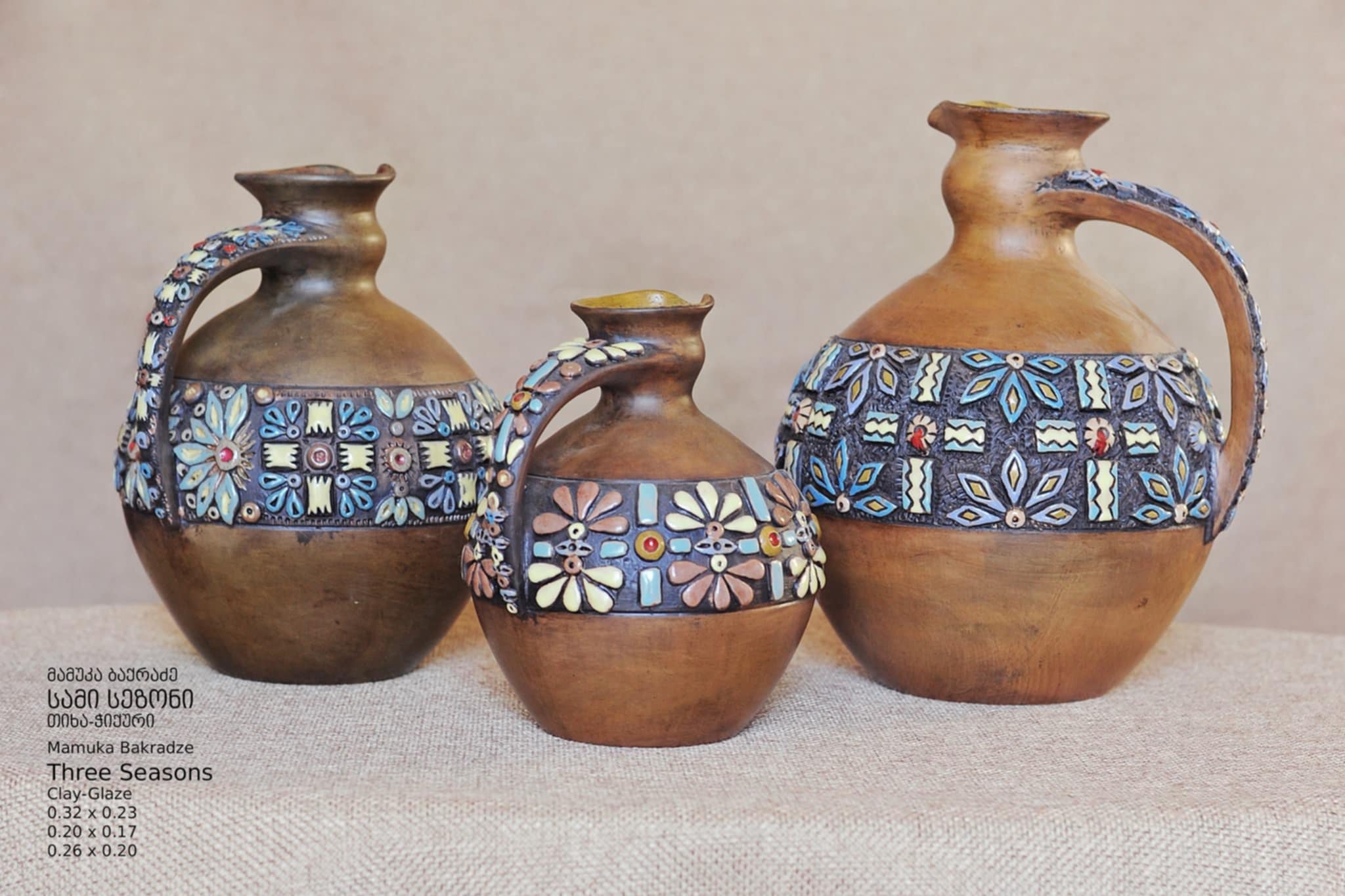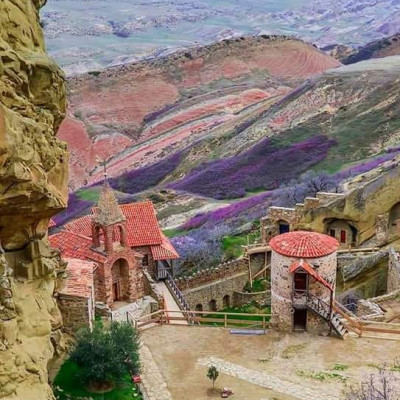
Georgia is a country of living traditions, and one of the best ways for visitors to connect with its culture is through clay, ceramics, and handmade souvenirs. Georgian ceramics have a history of thousands of years, deeply linked to the country’s winemaking and daily life. The most famous example is the qvevri, a large clay vessel used for fermenting and storing wine, recognized by UNESCO as part of humanity’s heritage. While travelers cannot carry a full-sized qvevri, miniature versions are popular gifts, symbolizing Georgia’s winemaking spirit. Beyond qvevri, potters create colorful plates, bowls, and jugs decorated with grapevine patterns and traditional designs, making each item both beautiful and practical. A vivid example of this tradition is the work of Mamuka Bakradze, one of Georgia’s leading craftsmen, who has been creating clay souvenirs for more than 50 years. His dedication to clay art keeps the Georgian style alive, proving that these traditions are not only preserved in museums but are part of everyday life. Tourists exploring Tbilisi’s old town or regional craft markets will find shelves full of ceramics and clay items—brightly painted jugs, candle holders, and small figurines—each carrying the spirit of the artisan’s imagination. Souvenirs in Georgia extend far beyond pottery. Minankari, the ancient art of enamel jewelry, is one of the most admired, offering pendants, earrings, and rings in vibrant colors. Textiles such as wool socks, scarves, and felt products represent the mountain lifestyle, while wooden crafts like carved wine horns, chess sets, and decorative boxes reflect Georgian hospitality and traditions. Smaller souvenirs often feature the Georgian alphabet, with magnets, keychains, and notebooks decorated in the unique Mkhedruli script. What makes these souvenirs truly special is their authenticity. Most are handmade, carrying the personal touch of the craftsman. Markets like Tbilisi’s Dry Bridge allow travelers to meet artisans, hear their stories, and support local families directly. Many workshops also invite visitors to try pottery shaping or enamel painting in short masterclasses, creating unforgettable experiences along with a personal keepsake. Bringing home a clay jug, an enamel pendant, or a woolen scarf is not just collecting an object, it is carrying with you a part of Georgia’s history, traditions, and warm hospitality. Each piece tells a story—of artisans like Mamuka Bakradze who keep clay art alive, of centuries-old techniques still practiced today, and of a culture that values beauty, craftsmanship, and authenticity. Georgian clay, ceramics, and handmade souvenirs are more than simple gifts; they are lasting reminders of an unforgettable journey.






 Deutsch
Deutsch
 русский
русский
